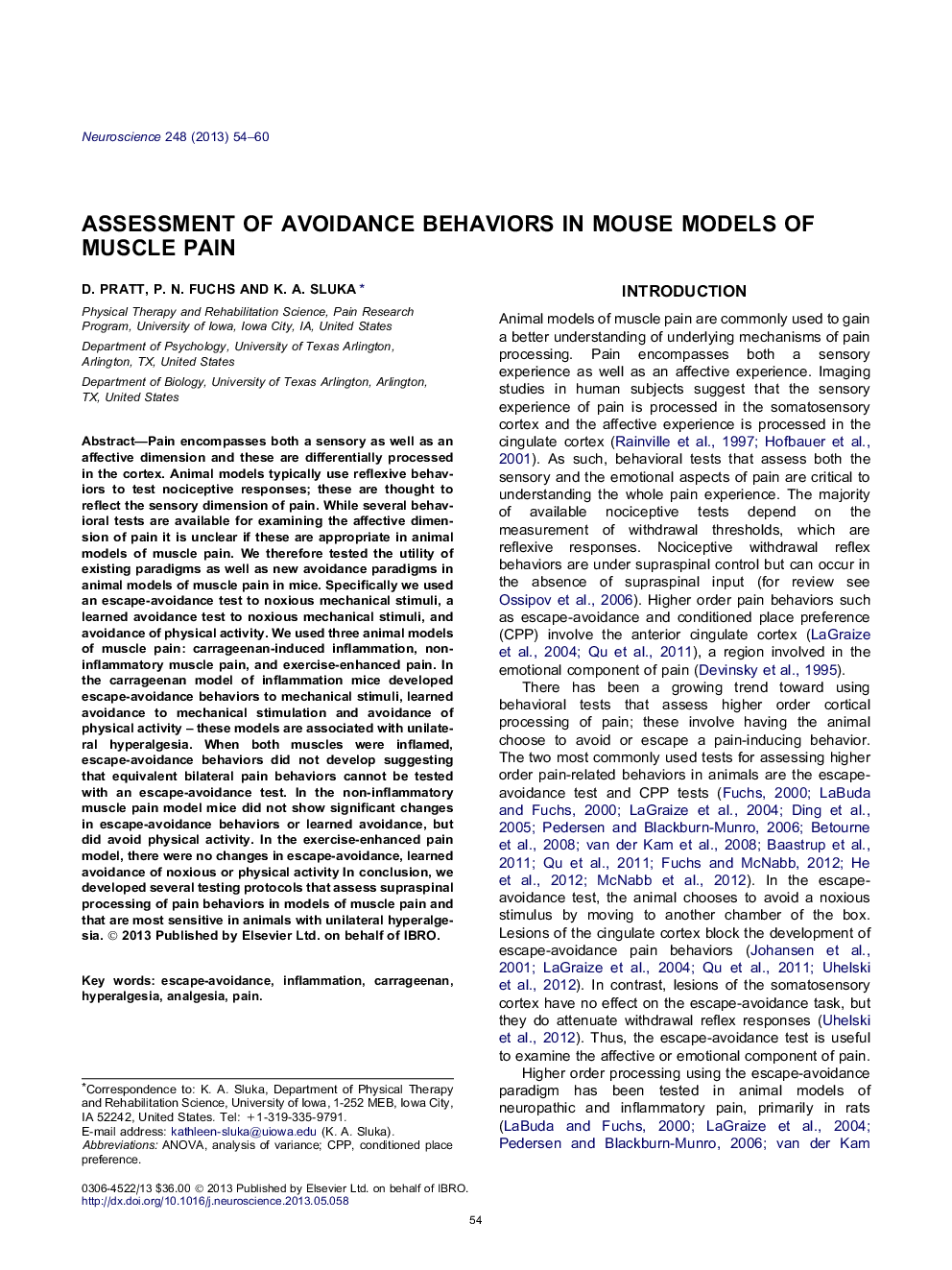| کد مقاله | کد نشریه | سال انتشار | مقاله انگلیسی | نسخه تمام متن |
|---|---|---|---|---|
| 6274751 | 1614828 | 2013 | 7 صفحه PDF | دانلود رایگان |
- In an inflammatory muscle pain model we observe enhanced avoidance behaviors to noxious stimuli and physical activity.
- In a non-inflammatory muscle pain model there are minimal changes in avoidance behaviors to noxious stimuli.
- In a non-inflammatory muscle pain model there is increased avoidance of physical activity.
- In exercise-enhanced muscle pain, there are no changes in avoidance behaviors to noxious stimuli or physical activity.
Pain encompasses both a sensory as well as an affective dimension and these are differentially processed in the cortex. Animal models typically use reflexive behaviors to test nociceptive responses; these are thought to reflect the sensory dimension of pain. While several behavioral tests are available for examining the affective dimension of pain it is unclear if these are appropriate in animal models of muscle pain. We therefore tested the utility of existing paradigms as well as new avoidance paradigms in animal models of muscle pain in mice. Specifically we used an escape-avoidance test to noxious mechanical stimuli, a learned avoidance test to noxious mechanical stimuli, and avoidance of physical activity. We used three animal models of muscle pain: carrageenan-induced inflammation, non-inflammatory muscle pain, and exercise-enhanced pain. In the carrageenan model of inflammation mice developed escape-avoidance behaviors to mechanical stimuli, learned avoidance to mechanical stimulation and avoidance of physical activity - these models are associated with unilateral hyperalgesia. When both muscles were inflamed, escape-avoidance behaviors did not develop suggesting that equivalent bilateral pain behaviors cannot be tested with an escape-avoidance test. In the non-inflammatory muscle pain model mice did not show significant changes in escape-avoidance behaviors or learned avoidance, but did avoid physical activity. In the exercise-enhanced pain model, there were no changes in escape-avoidance, learned avoidance of noxious or physical activity In conclusion, we developed several testing protocols that assess supraspinal processing of pain behaviors in models of muscle pain and that are most sensitive in animals with unilateral hyperalgesia.
Journal: Neuroscience - Volume 248, 17 September 2013, Pages 54-60
